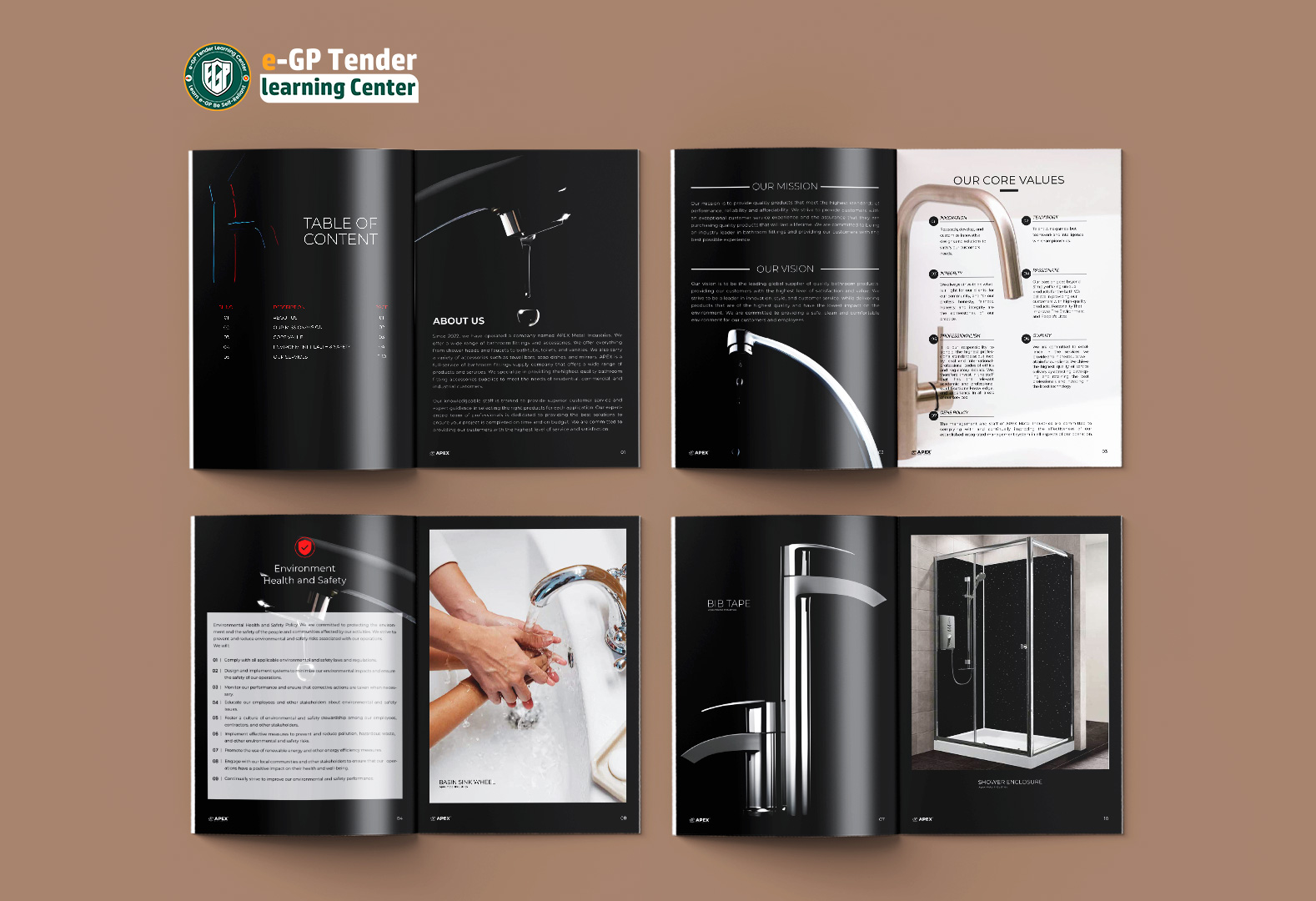Follow Our Company Profiles Facebook Page: https://www.facebook.com/companyprofilebd



Introduction
In today’s competitive business landscape, a well-designed and informative product catalog can make all the difference. It serves as a powerful marketing tool that showcases your products, attracts potential customers, and boosts sales. In this comprehensive guide, we will explore the process of creating a stellar product catalog that effectively represents your company and drives business growth. From planning and design to content creation and distribution, we will cover every aspect of crafting a winning product catalog.
Why Product Catalogs Matter
A product catalog is not just a mere collection of images and descriptions. It is a powerful tool that serves multiple purposes and benefits your business in various ways. Here are some key reasons why product catalogs matter:
- Showcasing your products: A well-designed catalog allows you to showcase your products in an organized and visually appealing manner, helping customers understand your offerings better.
- Building brand identity: A professionally designed catalog with consistent branding elements helps to establish and reinforce your brand identity in the minds of customers.
- Increasing sales: A visually appealing and informative catalog can significantly boost sales by attracting customers, generating interest, and encouraging purchases.
- Driving customer engagement: By providing in-depth product information and engaging visuals, a catalog can enhance customer engagement and create a memorable shopping experience.
- Reaching a wider audience: Digital catalogs can be easily shared across various platforms, allowing you to reach a wider audience and expand your customer base.
Planning Your Product Catalog
Before diving into the design and content creation process, it’s crucial to have a solid plan in place. This involves defining your goals, target audience, and overall catalog structure. Here are the key steps to planning your product catalog:
Define Your Goals
Start by clearly defining the goals you want to achieve with your product catalog. Are you aiming to increase sales, showcase new products, or target a specific market segment? Clearly outlining your objectives will help guide your decision-making throughout the catalog creation process.
Identify Your Target Audience
Understanding your target audience is essential for creating a catalog that resonates with them. Consider demographics such as age, gender, location, and preferences. Conduct market research to gain insights into their needs, desires, and pain points. This information will shape the design, content, and tone of your catalog.
Organize Your Product Categories
Categorizing your products in a logical and intuitive manner makes it easier for customers to navigate your catalog. Group similar products together and create clear sections or chapters. This organization will enhance the overall user experience and make it easier for customers to find what they’re looking for.
Choose the Right Format
Decide on the format of your product catalog based on your target audience and distribution channels. Common formats include print catalogs, digital catalogs, or a combination of both. Each format has its advantages and considerations, so choose the one that aligns with your goals and budget.
Designing Your Product Catalog
The design of your product catalog plays a crucial role in capturing the attention of your audience and conveying your brand message. Here are some key design elements to consider:
Visual Branding
Maintain consistent visual branding throughout your catalog. Use your company logo, colors, fonts, and imagery that align with your brand identity. Consistency across all design elements will create a cohesive and professional look.
Layout and Composition
Create an aesthetically pleasing and easy-to-read layout for your catalog. Use a grid system to ensure consistency and balance. Pay attention to spacing, margins, and alignment to create a visually appealing composition.
High-Quality Images
Use high-resolution product images that accurately represent your products. Show products from multiple angles and provide close-up shots to showcase details. Ensure consistent image quality and use professional photography if possible.
Engaging Product Descriptions
Craft compelling and informative product descriptions that highlight the key features, benefits, and unique selling points of each product. Use persuasive language, bullet points, and subheadings to make the information easily scannable.
Call-to-Action
Include clear and compelling calls-to-action throughout your catalog to prompt customers to take action. Whether it’s making a purchase, contacting your sales team, or visiting your website, guide customers on what steps to take next.
Creating Compelling Catalog Content
While design is important, the content of your catalog is equally crucial. It should educate, engage, and persuade customers to make a purchase. Here are some tips for creating compelling catalog content:
Product Descriptions
Write clear, concise, and persuasive product descriptions that highlight the unique features and benefits of each product. Use language that appeals to your target audience and addresses their pain points.
Storytelling
Tell a story with your catalog by creating a narrative around your products. Showcase how they can solve problems, improve lives, or enhance experiences. Use storytelling techniques to create an emotional connection with your audience.
Testimonials and Reviews
Include customer testimonials and product reviews to build trust and credibility. Highlight positive feedback and experiences to reassure potential customers about the quality and reliability of your products.
Pricing and Discounts
Clearly display pricing information and any special discounts or promotions. Make it easy for customers to understand the pricing structure and any incentives they can benefit from.
Product Comparisons
If you offer similar products with different features or price points, provide a clear comparison chart. This helps customers make informed decisions and choose the product that best suits their needs.
Distributing Your Product Catalog
Once your product catalog is ready, it’s time to distribute it to your target audience. Here are some effective distribution channels to consider:
Print Distribution
Print and distribute physical copies of your catalog through direct mail, events, trade shows, or as handouts at your store. This allows customers to have a tangible and tactile experience with your catalog.
Digital Distribution
Leverage digital platforms for wider reach and accessibility. Create a digital version of your catalog that can be shared via email, social media, your website, or third-party platforms. Optimize the digital catalog for mobile devices for a seamless user experience.
Website Integration
Integrate your product catalog into your website to provide a seamless shopping experience. Create dedicated landing pages for each product category and ensure easy navigation and search functionality.
Email Marketing
Leverage your email marketing list to promote your product catalog. Send targeted emails to your subscribers, highlighting new products, exclusive offers, or seasonal promotions. Include links to the digital version of your catalog for easy access.
Measuring Success and Making Improvements
To ensure the effectiveness of your product catalog, it’s important to measure its impact and make improvements based on the data gathered. Here are some key metrics to consider:
Conversion Rate
Track the percentage of catalog recipients who take the desired action, such as making a purchase or contacting your sales team. Analyze the conversion rate to identify areas for improvement and optimize your catalog accordingly.
Engagement Metrics
Monitor engagement metrics such as time spent on each page, click-through rates, and bounce rates. This data can provide insights into the effectiveness of your design, content, and layout.
Customer Feedback
Collect feedback from customers who received your catalog. Conduct surveys, interviews, or read online reviews to understand their perception of your catalog. Use this feedback to make necessary improvements and address any concerns.
Sales Performance
Analyze the impact of your catalog on sales performance. Compare sales data before and after the release of the catalog to determine its effectiveness in driving revenue.
Conclusion
A well-designed and strategically crafted product catalog can be a game-changer for your business. It serves as a powerful marketing tool that showcases your products, attracts customers, and drives sales. By following the steps outlined in this guide, you can create a compelling and effective product catalog that represents your brand and helps you achieve your business goals. Remember to continuously analyze, optimize, and improve your catalog based on customer feedback and data-driven insights. Get started today and unlock the potential of a stellar product catalog for your business.
CTA: Interested in learning more about Product Catalog? Contact us today to discover how we can help you create compelling Product Catalogs that showcase your strengths and attract international buyers.
Contact Information :
If anyone wants to create a Product catalog for your company, please contact us
Cell: 01714130488
Subscribe to our YouTube channel for updates : https://www.youtube.com/@RajibsExperience
Follow Our Company Profiles Facebook Page: https://www.facebook.com/companyprofilebd
Follow Our Others Services Facebook Page : https://www.facebook.com/egpten
How to Make Company Profile in Bangladesh (Watch the video): https://www.youtube.com/watch?v=68b7_7QgHwQ&t=58s





